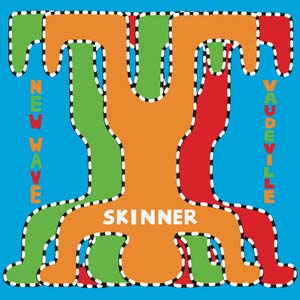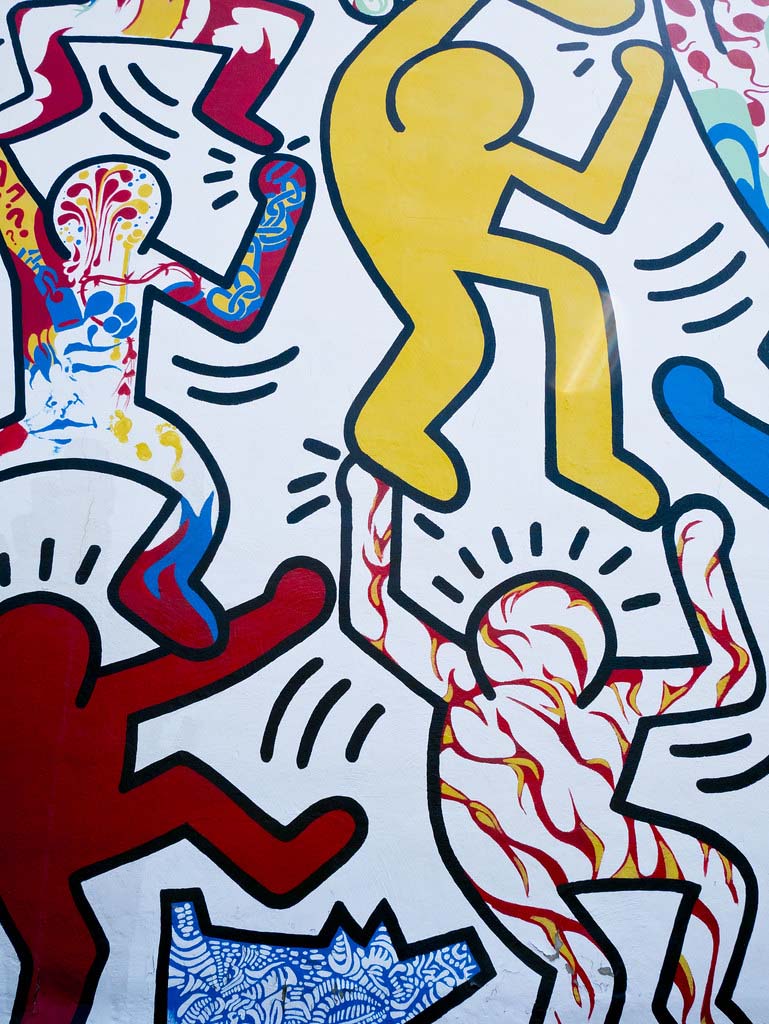- Music
- 13 Feb 25

Art-punk supremo Aaron Corcoran, AKA Skinner, sits down to reveal how the infamous 57 Club in Manhattan’s East Village inspired his stellar debut album New Wave Vaudeville.
Great art doesn’t happen in a vacuum. It is, more often than not, the product of a perfect mix of people, politics, history, environment, collaboration and timing. If the conditions are right – like in Renaissance Florence or the ‘90s grunge movement in Seattle – great ‘scenes’ are formed, leaving a lasting impact that reaches far beyond the confines of their origins.
When it comes to music, few places in modernity are as famous (or infamous) in this regard as New York City’s 57 Club. The microcosmic spot was a haven for eccentrics and creatives in the late ‘70s and early ‘80s, becoming a brief-yet-bizarrely-wonderful melting pot.
“The posters used to say ‘We’re looking for freaks, geeks, weirdos, emotional cripples, pharaohs, zombies, strange people,’ so you had to fit that criteria to perform, to a certain extent,” informs Skinner, real name Aaron Corcoran, whose brilliant debut LP New Wave Vaudeville pays homage to the legendary moment in time in Manhattan’s East Village.
“It was a musical art showcase where poets, performance artists and drag artists, as well as bands and musicians, came and did weird stuff. It was a short-lived period, but it was a very fruitful time, and it was very much about free expression and mixing musical genres that shouldn’t go together.
“I was drawn to that, because it totally changes what you think is possible for conventional music. All of a sudden you’ve got jazz, punk and disco and all these different elements in one place.”
Advertisement
The assortment of ingredients makes New Wave Vaudeville hard to pin down to a single genre. It’s definitely a rock record, though the rattling bongos, funk basslines and skirling saxophones add remarkable layers of eclecticism.
 New Wave Vaudeville
New Wave VaudevilleSome of Skinner’s favourite musicians to have graced the 57 Club include DNA, Teenage Jesus and the Jerks, Kid Creole and the Coconuts, and Lydia Lunch, as well as early Sonic Youth. World-famous visual artists were also known to hang around the venue, including Jean-Michel Basquiat, Keith Haring (who inspired the New Wave Vaudeville cover art, designed by Skinner’s girlfriend) and David McDermott.
The latter, Skinner says, hosted a number of New Wave Vaudeville shows.
“And he lives in Dublin,” he adds. “He came here after he got fucked by the IRS, for not paying taxes on all his paintings. Ireland’s one of the only countries where you’re tax exempt, to a point, on the private sale of your own artwork. I got to sit down with him for an evening in a coffee shop and ask him about the art and music.”
How did such a dream meeting come about?
Advertisement
“I was driving in East Wall and saw this real eccentric looking guy, dressed like he’s from the 1930s. I thought ‘Is that David McDermott? What is he doing in East Wall of all places?’ I didn’t believe it at first, but the next week I was walking down the street and there he was – walking a big Dobermann. I was like, ‘Fuck, that is him’. But I was too scared to say anything.
“Later, I went onto Instagram and messaged his page, mentioning that I’m writing this album inspired by New Wave Vaudeville and that I’d love to talk to him. His manager messaged back and said David would love to chat. So the next week we met up in a cafe in East Wall and hung out for about six hours.”
It was, unsurprisingly, a one-of-a-kind learning experience. What on earth did they get up to?
“He took me on a walk around the East Wall and told me how it was bombed in World War II,” Skinner reveals. “We also went to the library and he forced me to take out a book on the bombing of East Wall.
“He says that he’s a time experimenter, which means that he doesn’t believe in time travel, but he has been living like a man from 1930 since he was 22. He has no hot water or technology in his home, and lights everything with candles and oil lamps, and basically lives like that full-time.
“He was very knowledgeable and told me about how they had no money in the 57 Club days. They were stealing because they were starving – that’s what comes across in the music. The struggle of living in shithole apartments, drugs, and getting robbed all the time.
“There’s really talented, eccentric people in the world that you think aren’t real until you meet them. It’s crazy that these people exist, in a good way.”
Advertisement
 Keith Haring's artwork
Keith Haring's artworkIndeed, one of the cornerstones of the 57 Club ethos, and New Wave Vaudeville on tracks like ‘Geek Love’, is celebrating weirdness.
“Funnily enough, in popular culture a geek is usually used for someone who’s a nerd,” Skinner informs. “It actually comes from the circus: a geek was the person who would go up at the beginning of the show and warm up the crowd by biting the head off a live chicken and spitting it into the audience.
“I never judge someone on what they say they are like, I judge people on who they really are. That idea and concept is so lost in society. I love the idea of pissing someone off simply by just existing, and being exactly who you are.”
 Skinner. Copyright Miguel Ruiz.
Skinner. Copyright Miguel Ruiz.Advertisement
Speaking of being pissed off, anger is another one of New Wave Vaudeville’s core emotions, with ‘Calling In Sick’ and ‘When You Live In A Shoe’ standing as furious examples of Skinner’s disdain with working shitty jobs and the pressures of modern life.
“I think my anger is tied up with a lot of frustration,” he says. “It comes from deeper places. When I was 17, I experienced the deaths of a couple of friends. I was exposed to a lot of very adult things.
“I went to college, where everyone was happy-go-lucky and finding themselves. I was totally withdrawn. I didn’t know how to communicate with other people because of that.
“I’d come home and record music because it was escapism. It’s only in the last couple of years that I’ve come out of it and really embraced life, which is important because it’s so precious.
“There’s a John Lydon quote – ‘Anger is an energy’. I always used it quite destructively when I was younger and now I try to use it constructively by putting it into art.”
Skinner’s method for channelling his rage on New Wave Vaudeville was through some old-fashioned punk screaming – a skill he honed with the help of Gilla Band’s vociferator-in-chief Dara Kiely.
“I was having a smoke out the front of our studios one day and Alan [Duggan] and Dara asked me to join them for a few cans,” he reveals. “I got to hear half of their new record about six months before it came out, then Dara showed me some demos of his solo stuff, and asked if I had any of my own. So we started having this demo-off.
Advertisement
“He noticed that I liked to scream, but said it sounded like I wasn’t quite there yet. He asked if I wanted to do some lessons and he showed me his whole routine for warming up. That’s what people don’t understand about bands who have a screamer or shouter: there’s a lot of warming up going on.”
“Gilla Band are so nice and forthcoming with knowledge,” Skinner concludes. “You meet others operating at that level that are assholes. To see people who are so down to earth is really inspiring.”
• New Wave Vaudeville is out now.










